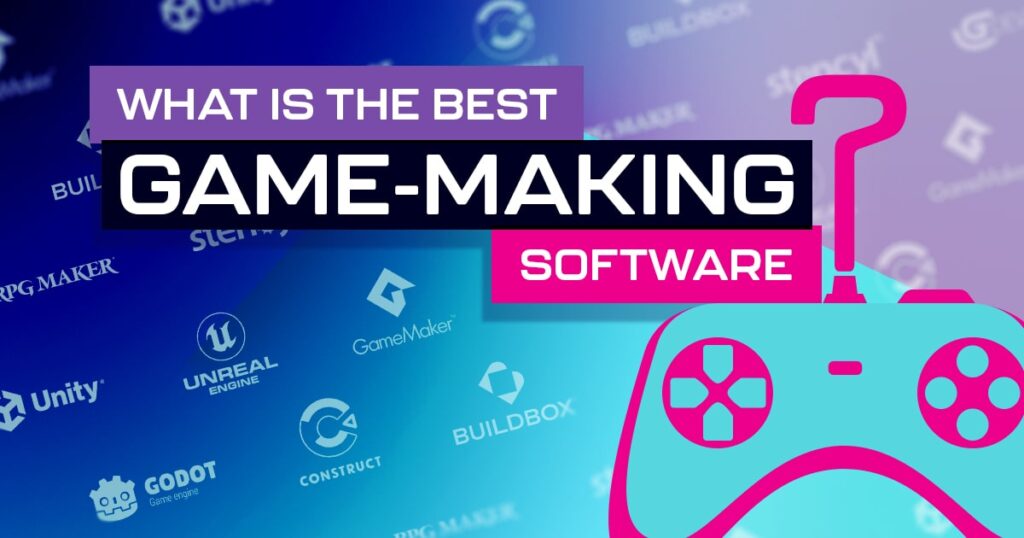GameMaker is a game development engine that aims to make game creation more accessible for beginners. The tool provides a drag-and-drop interface, a scripting language for creating game features, customizable object editors, sprite editors and sound effects libraries. To create a game with GameMaker, users must plan the game, create game assets, build the game and test it, looking out for errors, bugs and loopholes before sharing it with others. While game development has historically been considered a task only for specialists, GameMaker allows people from all backgrounds to enter the game development scene.
GameMaker: A Beginner-Friendly Engine for Creating 2D Games
Introduction
Game development is a process that requires a lot of skills, patience, and hard work. In the past, game development was considered to be a task only for specialists, due to a wide range of skills needed to create a single game. However, with the development of new technologies and tools, game development has become a more accessible process for people from all backgrounds. Among these tools is GameMaker, an engine that makes game development easier for beginners. This article delves into how GameMaker works and its role in creating 2D games.
What is GameMaker?
GameMaker is an engine that allows people to create 2D games without requiring intense programming skills. Because it is simple to use compared to other engines and development environments, it is popular among those who are just getting started with game development. GameMaker provides an integrated development environment (IDE), which allows users to develop games using a drag-and-drop interface or its built-in scripting language.
Features of GameMaker
GameMaker offers a range of features designed to make game development easier. Here are some of the most significant features of GameMaker:
Drag-and-Drop Interface
GameMaker’s drag-and-drop interface allows users to create games visually. Users can drag-and-drop pre-defined actions, events, and scripts to create their games, without having to write a single line of code. This interface makes the game development process simple, faster, and more enjoyable for users.
Scripting Language
GameMaker has its scripting language called GameMaker Language (GML), which allows users to create almost any feature they desire. GML is easy to learn and understand, even for beginners. Unlike other languages such as C++, users don’t have to be professional coders to create scripts with GML.
Customizable Object Editors
GameMaker allows users to create custom object editors for their games. This feature allows users to modify the attributes of objects, including sprites, sounds, and scripts. The object editors also include their default settings, which are useful when creating new objects.
Sprite Editor
GameMaker has a built-in sprite editor, which lets users create their own game sprites. The editor includes all the basic tools needed to create 2D sprites, including pixel-level editing tools, layers, and image manipulation tools. Users can import and export their own graphics in various image formats, such as PNG, JPG, and GIF.
Sound Effects
GameMaker includes a range of sound effects, including background music, sound effects, and ambient soundscapes. These can be easily imported into the game and edited to suit the game objectives.
Creating a Game with GameMaker
Creating a game with GameMaker is a straightforward process that involves the following steps:
Step 1: Planning the Game
Begin by planning the game you would like to create. Create a list of the game’s objectives, requirements, and assets you will need. Consider the target audience and the likely platforms the game will be played on. Once you have a detailed plan, proceed to the next step.
Step 2: Creating the Game Assets
With your plan in place, create the game assets, including graphics, sound effects, background music, and storylines. You can do this by creating your own assets, downloading existing assets from databases, or designing these assets using GameMaker’s sprite editor.
Step 3: Building the Game
After creating the assets, it’s time to build the game using GameMaker. Create objects, backgrounds, scripts, and animations, and ensure that these objects interact with each other seamlessly.
Step 4: Testing the Game
Test your game to ensure that it is working correctly. Look out for errors, bugs, and loopholes, and fix them before sharing your game with others.
Conclusion
Game development can be a challenging task, especially for beginners. However, GameMaker offers an easy-to-use interface with a range of features designed to make game development less daunting. With GameMaker, creating 2D games is an enjoyable and simple process, even for those without programming backgrounds. The drag-and-drop interface, scripting language, customizable object editors, sprite editors, and sound effects libraries are just some of the features that make GameMaker an indispensable tool for game developers.
